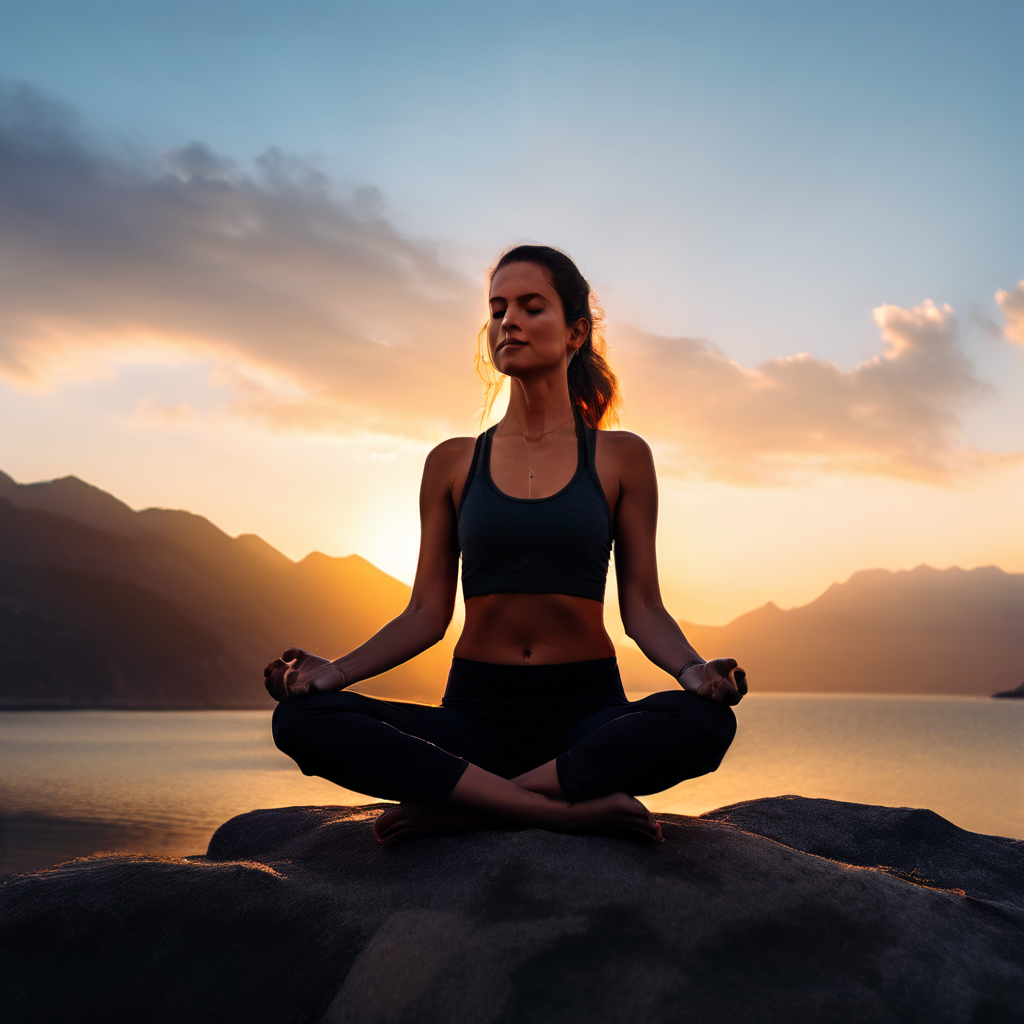Yoga for Stress Relief: Techniques to Calm the Mind
Introduction to Yoga and Stress Relief
In our modern, fast-paced world, stress has become a ubiquitous companion for many individuals. Whether stemming from work pressures, personal responsibilities, or societal demands, managing stress is crucial for maintaining overall well-being. One highly effective and holistic approach to combat stress is through the practice of yoga. Beyond its physical benefits, yoga serves as a powerful tool to calm the mind, promote mental clarity, and restore inner peace. This comprehensive guide explores various yoga techniques specifically designed to alleviate stress and support mental health.
Understanding Stress and Its Impact
Stress is the body's natural response to external pressures or threats, triggering a complex physiological reaction often referred to as the "fight or flight" response. While this response is essential for survival in acute situations, prolonged exposure to stress can lead to detrimental effects on both physical and mental health. Chronic stress has been associated with conditions such as high blood pressure, weakened immune function, insomnia, anxiety disorders, and even cardiovascular diseases. Therefore, effective stress management strategies are imperative for mitigating these health risks and enhancing overall quality of life.
Benefits of Yoga for Stress Relief
Yoga offers a multifaceted approach to stress management, addressing the interconnectedness of body, mind, and spirit. The benefits of yoga for stress relief are well-documented and encompass both physiological and psychological dimensions, making it a popular choice for individuals seeking natural and sustainable stress reduction techniques.
Physical Benefits of Yoga
Physically, yoga helps in releasing muscular tension, improving flexibility, and enhancing overall body awareness. Through a series of asanas (yoga poses) and mindful movements, practitioners stretch and strengthen their bodies, thereby alleviating physical manifestations of stress such as tightness in the shoulders, neck, and lower back. Regular practice of yoga fosters better posture, increased circulation, and improved energy levels, all of which contribute to a healthier response to stressors.
Mental and Emotional Benefits of Yoga
Yoga is equally beneficial for mental and emotional well-being, offering profound effects on stress reduction and emotional resilience. The integration of breathwork (pranayama), meditation, and mindfulness practices in yoga cultivates a sense of inner calm, reduces anxiety, and enhances emotional stability. By promoting present-moment awareness and acceptance, yoga empowers individuals to manage stress more effectively and navigate life's challenges with greater equanimity.
Different Types of Yoga Suitable for Stress Relief
Yoga encompasses a diverse array of styles and approaches, each uniquely suited to address specific needs and preferences in stress management. Choosing the right type of yoga involves considering factors such as physical fitness level, personal goals, and individual preferences for movement and meditation.
Hatha Yoga
Hatha yoga serves as a foundational practice that emphasizes the balance between physical postures (asanas) and breath control (pranayama). It is characterized by gentle movements and static poses aimed at aligning the body and calming the mind. Hatha yoga sessions often incorporate relaxation techniques and meditation practices, making it an ideal choice for beginners and individuals seeking a comprehensive approach to stress relief.
Restorative Yoga
Restorative yoga focuses on deep relaxation and rejuvenation through supported poses and gentle stretching. Utilizing props such as bolsters, blankets, and blocks, practitioners engage in passive stretching that promotes muscular relaxation and releases tension from the body. Restorative yoga sessions typically include extended periods of relaxation in poses like Savasana (Corpse Pose), offering profound benefits for stress reduction and overall well-being.
Yin Yoga
Yin yoga targets the connective tissues, joints, and fascia through long-held, passive poses performed primarily on the floor. This meditative practice encourages practitioners to surrender to discomfort and cultivate inner stillness. By holding poses for extended durations, Yin yoga stimulates the parasympathetic nervous system, facilitating deep relaxation and stress relief. It is particularly beneficial for individuals experiencing chronic stress, as it encourages the release of physical and emotional tension accumulated in the body.
Key Yoga Poses for Stress Relief
Certain yoga poses are particularly effective in promoting relaxation, releasing tension, and calming the nervous system. Incorporating these poses into a regular yoga practice can significantly enhance stress management efforts and contribute to overall well-being.
Child's Pose (Balasana)
Child's Pose is a restorative posture that gently stretches the spine, hips, and thighs while promoting deep relaxation. It is often used as a resting pose during yoga sessions to induce a sense of safety and surrender, facilitating the release of physical and mental tension accumulated throughout the day.
Corpse Pose (Savasana)
Savasana, or Corpse Pose, is a relaxation posture practiced at the end of a yoga session to integrate the benefits of physical practice and promote deep relaxation. Lying flat on the back with arms and legs comfortably spread, practitioners engage in conscious relaxation and mindful breathing. Savasana encourages the release of muscular tension and mental chatter, facilitating a state of profound relaxation and rejuvenation.
Breathing Techniques (Pranayama)
Pranayama techniques play a pivotal role in regulating the breath, calming the mind, and enhancing overall vitality. By focusing on intentional breathing patterns, practitioners can activate the body's relaxation response and reduce stress levels effectively.
Deep Breathing Exercises
Deep breathing involves inhaling deeply through the nose, expanding the lungs fully, and exhaling slowly through the mouth. This diaphragmatic breathing technique promotes relaxation, lowers heart rate, and enhances oxygenation of tissues, thereby reducing physiological signs of stress and promoting mental clarity.
Alternate Nostril Breathing (Nadi Shodhana)
Nadi Shodhana, or alternate nostril breathing, is a balancing pranayama technique that involves alternating the flow of breath between the left and right nostrils. By harmonizing the flow of vital energy (prana) throughout the body, Nadi Shodhana calms the mind, improves concentration, and alleviates stress. This breathwork technique is particularly beneficial for restoring balance and promoting emotional equilibrium during periods of heightened stress.
Mindfulness Meditation in Yoga
Mindfulness meditation is an integral component of yoga practice that cultivates present-moment awareness, non-judgmental acceptance, and inner peace. By anchoring attention to the breath, bodily sensations, or a specific focal point, practitioners develop resilience against stressors and enhance overall emotional well-being.
Body Scan Meditation
Body scan meditation involves systematically directing attention to different regions of the body, starting from the toes and progressing upward to the crown of the head. This practice promotes deep relaxation, enhances body awareness, and releases tension stored in various muscle groups. Body scan meditation is particularly effective for individuals experiencing chronic stress, as it fosters a sense of embodied presence and tranquility.
Guided Meditation
Guided meditation sessions are facilitated by an instructor or recorded voice, providing structured guidance and visualization techniques to promote relaxation and stress reduction. By engaging in guided imagery and positive affirmations, practitioners can cultivate a sense of inner peace, emotional resilience, and mental clarity. Guided meditation is accessible to individuals of all experience levels and serves as a valuable tool for managing stress effectively.
Creating a Personalized Yoga Routine for Stress Relief
Developing a personalized yoga routine tailored to individual needs and preferences is essential for optimizing the benefits of yoga in stress management. A well-rounded yoga practice integrates a variety of yoga styles, poses, and relaxation techniques to promote physical vitality and emotional equilibrium.
Morning Yoga Routine
A morning yoga routine serves as a proactive approach to setting a positive tone for the day ahead. Incorporating gentle stretches, energizing poses, and mindful breathing exercises helps in awakening the body, calming the mind, and preparing for daily challenges with resilience. A morning yoga practice enhances mental clarity, improves focus, and promotes emotional balance, thereby reducing stress and enhancing overall well-being.
Bedtime Yoga Routine
A bedtime yoga routine focuses on relaxation and preparing the body and mind for restorative sleep. Emphasizing restorative poses, gentle stretches, and soothing breathing techniques, bedtime yoga promotes relaxation of muscular tension and mental chatter accumulated throughout the day. By fostering deep relaxation and promoting sleep quality, a bedtime yoga practice enhances stress resilience and supports overall emotional well-being.
Advantages and Disadvantages of Using Yoga for Stress Relief
Advantages
- Comprehensive Approach: Yoga addresses stress on physical, mental, and emotional levels, offering a holistic approach to stress management.
- Accessible and Flexible: Yoga can be practiced by individuals of all ages and fitness levels, requiring minimal equipment and adaptable to personal preferences.
- Long-Term Benefits: Regular yoga practice promotes sustainable stress reduction, enhances resilience against stressors, and supports overall health and well-being over time.
Disadvantages
- Physical Limitations: Some individuals may experience challenges with certain yoga poses or practices due to physical limitations or health conditions.
- Individual Variability: The effectiveness of yoga in stress relief may vary among individuals based on factors such as consistency of practice, personal responsiveness, and concurrent stressors.
Conclusion
Yoga stands as a profound and accessible tool for managing stress, promoting relaxation, and fostering overall well-being. By integrating physical movement, breathwork, and mindfulness practices, yoga empowers individuals to cultivate resilience, reduce stress levels, and enhance their quality of life. Whether practiced as a daily ritual or as needed during times of stress, yoga offers a transformative path toward















Post a Comment
Thank you for your comment 💚